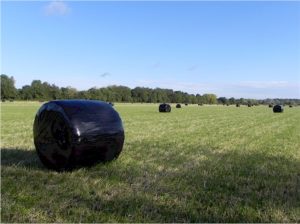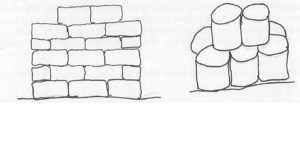Care When Stacking Bales
7 June 2017 All of us will be horrified with the recent headline “13 on farm deaths this year up to just the 5th March”! While machinery still accounts for the majority of fatalities, 2 of the deaths this year were due to falling bales. What can we do to avoid this and the terrible, everlasting pain it causes to the families?
All of us will be horrified with the recent headline “13 on farm deaths this year up to just the 5th March”! While machinery still accounts for the majority of fatalities, 2 of the deaths this year were due to falling bales. What can we do to avoid this and the terrible, everlasting pain it causes to the families?
- Only stack bales on a solid, level base.
- Dirt floors in sheds will be uneven. Consider concreting them.
- Having a solid base is even more critical where bales are stored outside.
- The site must also be well drained to avoid tractor ruts etc.
- If using a concrete pad drains will be required to collect runoff. A possible alternative would be use concrete slats for the base with drains running underneath.
- Always bait for vermin, particularly for bales made with twine. Broken bales will make the bales above unstable and more likely to fall.
- Always cover outdoor stacks. Rain can more than double the weight of bales. Use weights tied onto the sheet just above ground level to keep it in place, rather than bales on top of the sheet.
- Never stack higher than the capacity of the forklift ie never lift and stack 2 bales at one time ie one on top of the other.
- Consider “binding in” rectangular bales, the same as is done with small bales. This should always be considered where there is access to more than one side of the stack eg outdoor ricks.
- When stacking silage bales always overlap layers into a pyramid shape. The combination of bale wrap, rain and silage making/settling means the risk of bale movement is high ie never stack silage bales directly on top of one another. (The same would apply to straw when stacked on uneven ground.)
- Always ensure staff and in particular children cannot have access to round bales of straw stored directly on top of one another. It is easy to fall down the wholes between stacks and be unable to get out.
- Always step in the top layer to ensure that bales on the edge are “bound” in and as firm as possible. This will also help shed water off the top sheet.
- When purchasing a top sheet for outside stacks ensure it is large enough to come down to within 6 feet of the ground so it can be anchored/weighed down while standing on the ground.
Basil Lowman, basil.lowman@sac.co.uk
Sign up to the FAS newsletter
Receive updates on news, events and publications from Scotland’s Farm Advisory Service

